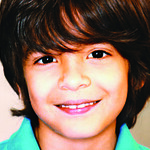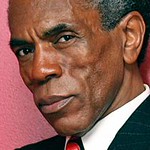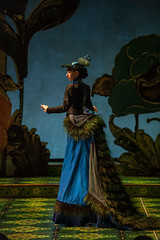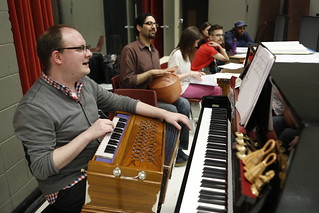 Name: Akash Chopra
Name: Akash Chopra
Role: Mowgli
Hometown: New York City, New York
What has been your favorite moment while performing The Jungle Book? Opening night was magical and I will never forget it.
How are you like your character? Mowgli is exciting and like's adventure. He tries different things, and I think I am the same.
Who is your favorite character from The Jungle Book? My favorite character is Baloo. He is so much fun.
 Name: André De Shields
Name: André De Shields
Role: Akela and King Louie
Hometown: Baltimore, Maryland
What has been your favorite moment while performing The Jungle Book? My favorite moment while performing in The Jungle Book is the contagion of joy that infects the entire audience at the end of Act 1, as King Louie sings "I Wanna Be Like You."
How are you like your character? I am like my character of Akela in terms of his stoicism, inherent skills of leadership, and craving of solitude. On the flip side, I match my character of King Louie in exuberance, elegance, extravagance, and swank swag.
What is your childhood memory of watching The Jungle Book? My childhood memory of watching The Jungle Book is not of the Disney animated film, but rather the 1942 Technicolor feature, directed by Zoltan Korda and featuring the East Indian child star, Sabu Dagastir, as Mowgli the Man-Cub.
Who is your favorite character from The Jungle Book? My favorite character is King Louie, which character — by the way — is a Disney creation, and does not appear in either the 1942 film or the original Rudyard Kipling story.
 Name: Kevin Carolan
Name: Kevin Carolan
Hometown: I was born in the Bronx, New York, but grew up in a small town in northern New Jersey named Wanaque. I've lived mostly in New Jersey ever since.
What has been your favorite moment while performing The Jungle Book? My favorite moment inThe Jungle Book might be the top of Act II, when I get to sing "Baloo’s Blues," a song written and recorded for The Jungle Book film, but not used in the feature. Premiering a "new" Sherman Brothers song is an incredible thrill and an honor, but it’s my favorite because it’s such a great song, and I really love singing it!
How are you like your character? It would be easy for me to say I'm like Baloo because we're both kind of lazy, and we both like to have the "bare necessities" come to us. However, Baloo and I have a great fondness for being a mentor to a young child. My son, Jack, is the same age as Mowgli, and I enjoy spending as much time with him as Baloo does with Mowgli.
What is your childhood memory of watching The Jungle Book? My childhood memory of The Jungle Book is the music. That's what I remember taking away from it, specifically the scat section between King Louis and Baloo in "I Wanna Be Like You." I remember trying to scat along with them and never being able to get the sounds to match up! But it didn't stop me from trying!
Who is your favorite character from The Jungle Book? My favorite Jungle Bookcharacter has to be Baloo. As a child, I identified more with Mowgli, but always looked up to that great “papa bear,” as it reminded me of my relationship with my own dad. And now to have the chance to BE Baloo? It fills me with great joy.
 Name: Tommy Derrah
Name: Tommy Derrah
Role: Kaa and others
Hometown: Born in Portland, Maine / Raised in Cape Elizabeth, Maine
What has been your favorite moment while performing The Jungle Book? At the end of Act 1, André De Shields performs “I Wanna Be Like You” while most of us play monkeys. The number ends frantically and the audience erupts with applause. The lights come up and we're all lying on the floor panting, sweating, and usually laughing!
Who is your favorite character from The Jungle Book? I have to say Kaa, because I’m playing him, but I love Bagheera because he’s patient and smart, and Mowgli, because I think we can all identify with his plight; trying to find where he belongs.





